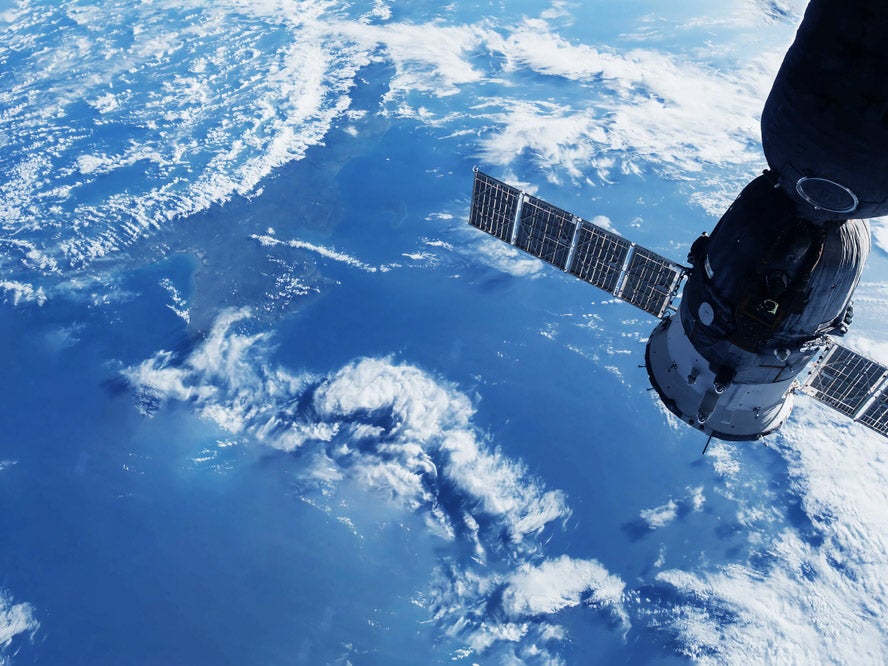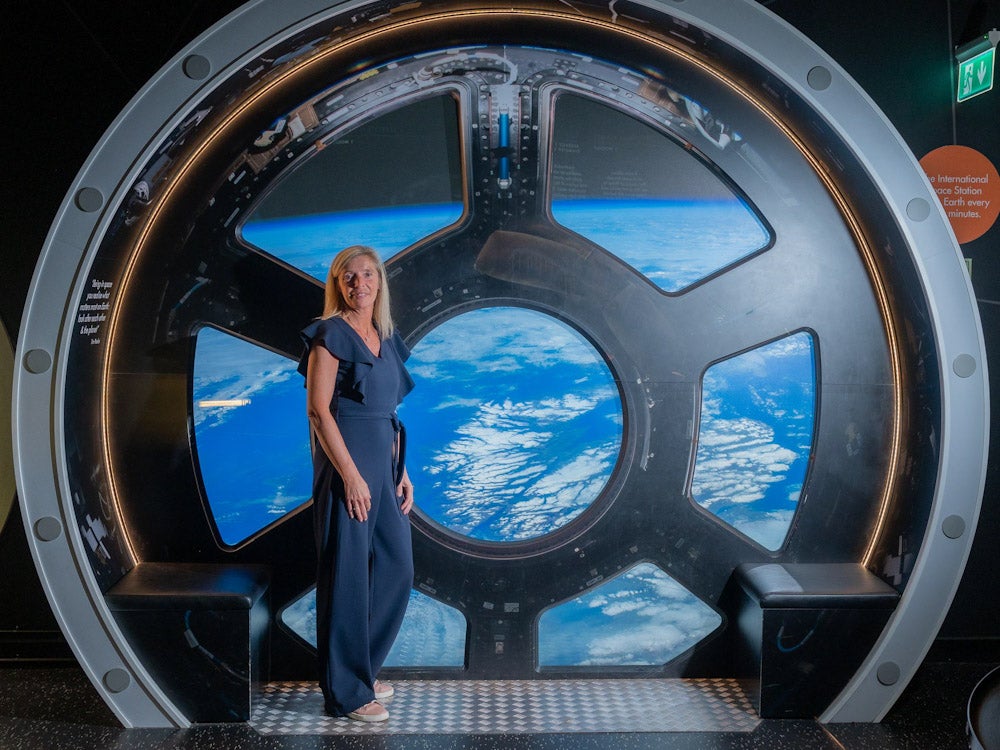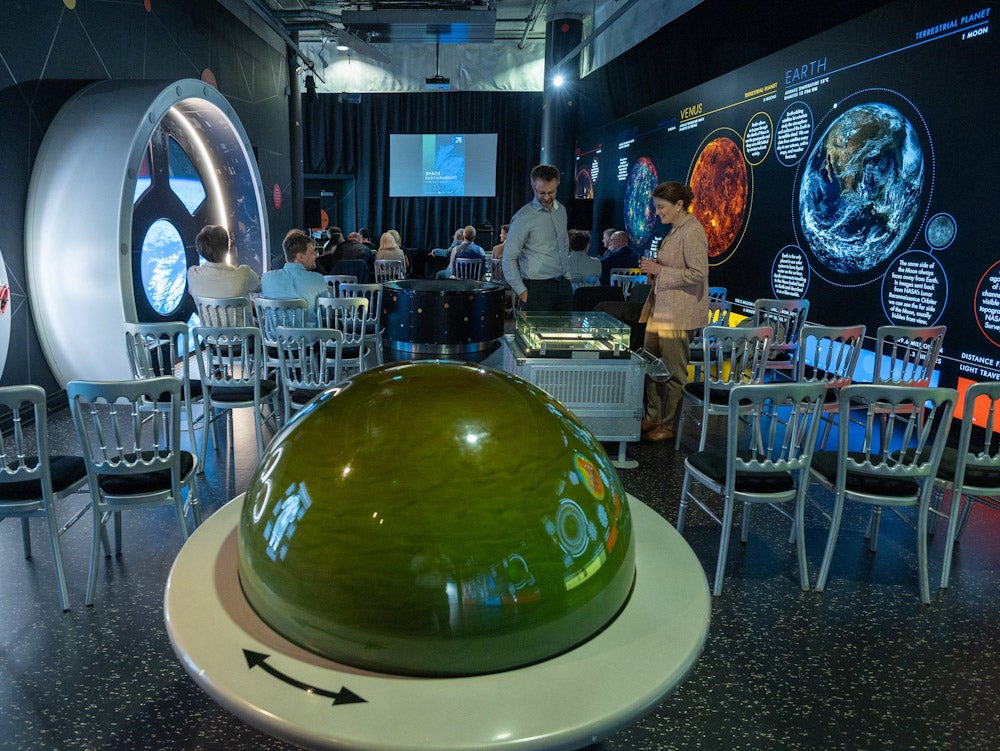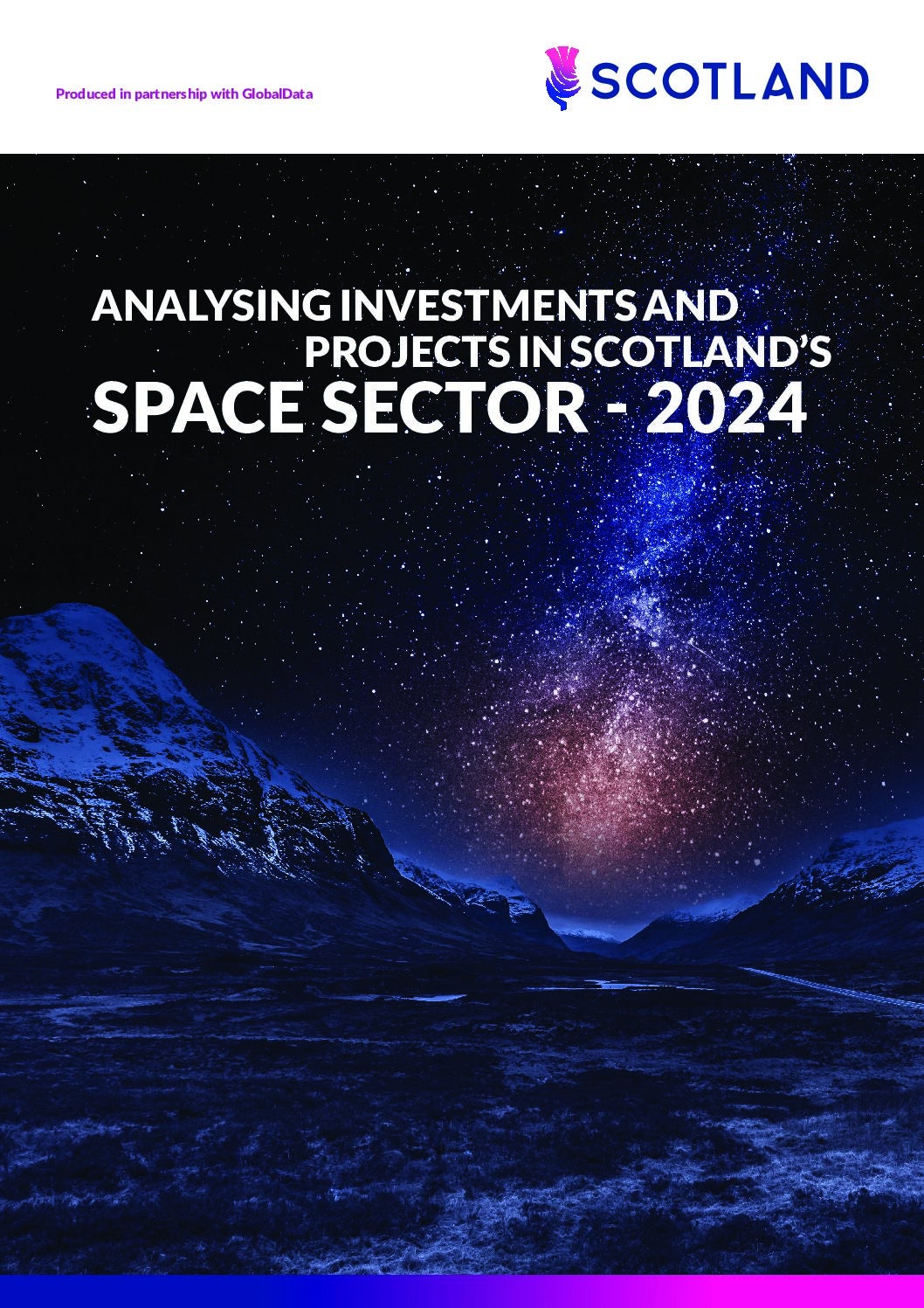
Sustainability is at the heart of Scotland’s growing space industry. The Scottish space sector declared its commitment to reducing its impact on the environment through the publication of a sustainable space roadmap in November 2022, the first of its kind in the world.
The Scottish Space Sustainability Roadmap addresses areas such as the environmental impacts of building, fuelling, and launching satellites, as well as the importance of promoting satellite data for environmental monitoring and climate analytics across many industries.
“The roadmap will help Scotland to play a leading role in demonstrating a sustainable approach to space-faring, as well as helping the UK sector contribute to the national net zero goal. We are looking at the totality of the space sector,” says Sharon Pryde, space specialist at Scottish Enterprise. “It isn’t just about looking at being in orbit. It’s also about looking back at Earth.”
There are currently five Scottish launch facilities either under construction or in the advanced planning stage. All of them are scaling up their launch capabilities, with many exploring the reusability of rockets, as well as carbon-offsetting activities such as tree planting and peatland restoration. However, getting rockets into space is not the end objective. It is part of a much larger chain of activities to learn more about the challenges facing the planet and businesses.
“The purpose of a rocket launch is not just to launch rockets, but to enable a range of improvements to life on Earth,” says Luke Vanstone, UK business development manager for Benchmark Space Systems, who emphasises the need to keep sustainability at the forefront of development and make more environmentally friendly choices.
“I think that’s challenging, but many companies, universities, agencies and government sectors are doing this with sustainability in mind,” he adds.
The space economy and sustainability
The space economy includes all space-related activities, such as exploration and research, as well as equipment, operations and management services.
GlobalData reports that the space economy has grown significantly in recent years, with the market valued at approximately $450bn in 2022 and projected to be worth up to $1trn by 2030, growing at a CAGR of 6%-10% between 2022 and 2030.
Alongside improving the security and integrity of the space environment for ongoing human use, the term “space sustainability” also refers to the rules regulating space activities, the creation and implementation of standards, and incentives for improved practices. Key challenges include orbital debris, space weather damage, orbital congestion, and end-of-life policies for spacecraft, according to the GlobalData report, Space Sustainability – Thematic Intelligence.
Space technologies enable numerous innovations and practices that promote sustainable growth and resource efficiency. For example, the agriculture industry uses satellite data to monitor fields, and expedite cultivation and crop harvesting.
“Satellites contribute towards reducing emissions in multiple ways,” explains Vanstone, who is based in Edinburgh. “Data can be used for methane and carbon-emissions monitoring, and for providing better insight to decision-makers and policymakers within the industry, who are trying to make active decisions to reduce our greenhouse gas output.”
Pryde agrees. “I’m working a lot with these space-data downstream companies,” she says. “There is such a range, from people working in conservation counting elephants to supporting energy transition, as well as increasing agriculture productivity and monitoring landslides, wildfires and floods which are all important to the financial services sector.”

Making space launches more sustainable
While downstream applications are more obviously helping to meet net-zero targets, space launches using chemical propellants might not be considered ‘green’. So, how can this part of the sector become more sustainable?
“There’s a lot of work ongoing already,” points out Vanstone. “For example, charters to encourage a more sustainable space sector, with policies to ensure satellite operators leave orbit on a required timeline. Or even technologies that allow for mission extensions of satellites and the reusability of assets, like returning certain stages of rocket engines, so you don’t have to build and throw away every time.
“There are also innovative and inventive ways of manufacturing in space, and then returning to Earth. It’s a flourishing and embryonic industry that could have an impact on carbon emissions in the future.”
For the rockets themselves, Vanstone says companies such as Benchmark are making more progressive, non-toxic fuel choices, and more sustainable and organised use of existing orbits.
“Take your propulsion system. A good interface will be able to dock to a satellite and refuel – what’s called mission extension,” he says. “Then some of your large satellites can stay in orbit rather than being replaced.”
Challenges in orbit also include the risk of collision with space traffic and debris.
“Orbital management is growing in importance,” explains Vanstone. “Part of the reason is that constellations – such as Starlink satellites – are becoming more frequent because they offer extremely useful fundamental technologies. Infrastructure like connectivity helps to give internet access to remote locations across the world.
“One example – relevant to what we do at Benchmark – is in terms of an accessible orbit and ensuring satellite operators are able to make sustainable choices when they send their satellites up. You might take propulsive capability with you on a mission, so you can do things like deorbit a satellite, potentially return it and reuse it in the future, and active debris removal, otherwise your satellites may become space litter (debris).
“In our case, it is trying to provide technology to do that reliably and safely, and making sure the end-users have access to the networks and data they need. The key is to continue understanding, discussing, and working with government agencies to make sure that growth in the industry is done in a sustainable way, and having the mitigation in place to understand and act towards these challenges.”
Collaborations in the Scottish space sector
Scottish Enterprise’s Net Zero Framework for Action 2023-2024 report outlines how the country aims to transform the economy by supporting businesses in innovation and scaling-up, particularly in the shift to a net-zero economy, as part of the Scottish Government’s National Strategy for Economic Transformation (NSET).
Already, Scotland has made a 341,000t reduction in CO2 from supported businesses or projects, and an 80% reduction in Scope 1, 2 and 3 emissions in 2022, compared with the 2015-16 baseline, according to the Scottish Enterprise report.
In addition, Scottish Enterprise is partnering with a wide range of companies and has so far provided funding to 12 projects utilising space data to help the transition to a net zero economy.
One of these is TownRock Energy, which is involved in the use of satellite imaging and Earth observation (EO) data to de-risk deep geothermal developments in Scotland. This includes fault characterisation, which is vital to understanding subsurface heat production and fluid flow – both essential for deep geothermal operations.

Space Intelligence received funding for its Annual Carbon Mapper, a granular biomass change-detection system. Another recipient was D-CAT, with its project involved in the classification of crops, and the monitoring of real-time growth and development using satellite remote sensing in partnership with Scotland’s Rural College (SRUC).
Meanwhile, GSI (Peatlands) builds on existing technology to develop a satellite-based solution to accurately map the key features of peatlands.
Another recipient is Terrabotics, which is leveraging space data to measure and monitor North Sea flaring and venting – the disposal of natural gas, either by controlled combustion or direct release to the atmosphere.
And one of Scotland’s first space companies, Clyde Space, received funding for its eNEXUS project to assess the feasibility of creating a catalogue of global shipping emissions using satellite data combined with other sources.
Pryde says Scottish Enterprise supports about 35 companies that are using EO techniques.
Scottish universities developing space innovations and talent
Throughout Scotland’s space sector, its universities play an essential role in areas such as research and providing talent.
“Universities are a critical part of any economy,” says Vanstone. “Specifically, the space industry, for stimulating innovation and new thinking. Some of the most innovative companies started as university spinouts.”
Scottish skills and innovation were also used in the development of the new James Webb space telescope.
Scottish Enterprise has strong connections with the country’s 14 universities, helping to connect and support young entrepreneurs while tapping into the insight of internationally respected academics.
“I work very closely with the University of Edinburgh,” says Pryde. “Edinburgh is now known as the ‘Space Data Capital of Europe’.
“We’ve got a strong network of universities and many research institutes. They’re all integral to the space sector. They have the facilities and expertise to develop satellites and other space technology, and to train the workers. The workforce is one of the main concerns for any sector. It’s about talent and skills – getting the right people into the industry.
“Scottish Enterprise is making sure we are working closely with the universities, with summer programmes, encouraging students [to consider careers in space]. For instance, the University of Strathclyde ran a Scottish Space School and 80 students attended a week-long programme. By looking for the next generation of space talent, we can make sure we’ve got that pipeline coming through.”
“Many countries are now looking to Scotland as a global leader,” adds Pryde. “We’ve had interest in our Scottish Space Sustainability Roadmap from Portugal, Australia, Switzerland, France, and the United Arab Emirates. There’s recognition that Scotland is leading on this.”
To learn more about how Scotland is growing its space sector, download the specially commissioned whitepaper below.



